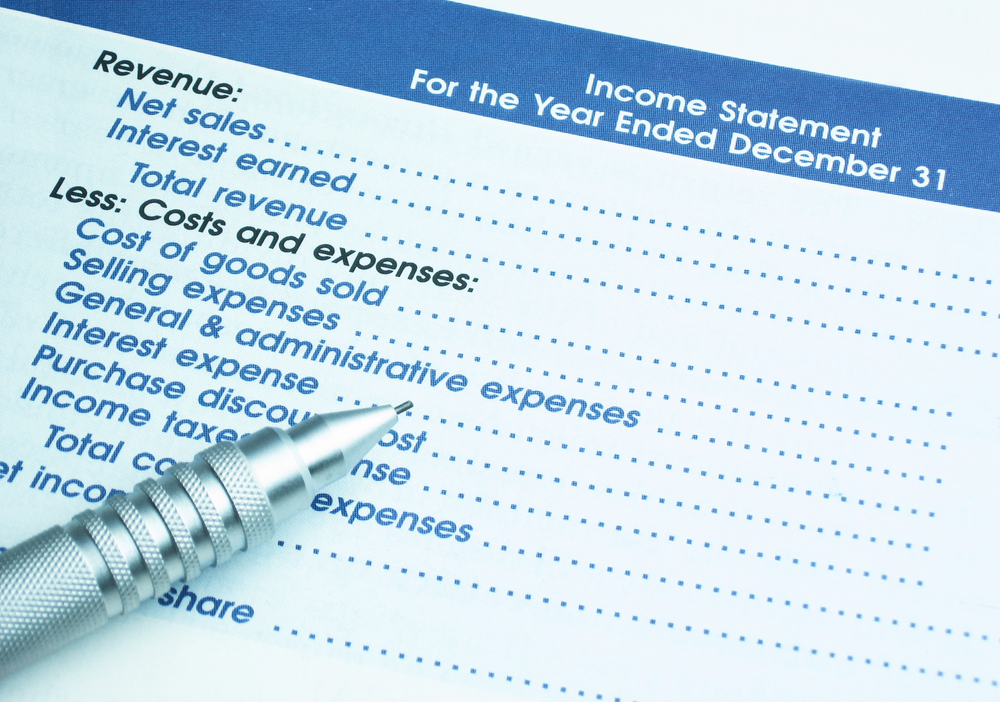Written by: Jacob Dayan
When running a business, there are five types of financial statements that are part and parcel to the smooth operation of a company. These are: (1) the balance sheet; (2) the income statement; (3) the cash flow statement; (4) the statement of change in equity; and (5) the statement of financial position. Of these five financial statements, the balance sheet, the income statement, and the cash flow statement are considered the “Big Three” — the three main financial statements that the owner of any business, regardless of size, should be very familiar with. And when looking at the big three, the importance of a healthy balance sheet and profit and loss income statement cannot be understated.
To any business owner, both the balance sheet and the income statement are important documents in their own rights. For many businesses, there is usually a strong relationship between the balance sheet vs income statement — when the income statement is strong, the balance sheet will tend to be strong as well. Because of this correlation, many business owners conflate the two documents — but beware: discrepancies between the balance sheet vs the income statement are definitely possible — and if you aren’t intimate with just how these documents differ, this can cause a big headache. That’s why we here at FinancePal have decided to break down the differences between the balance sheet and the income statement.
Related Reading: Accounting & Bookkeeping for Startups
First things first, the balance sheet is a financial statement that shows the balance between what a company owns and owes. This document explicates a company’s assets alongside its liabilities and its shareholders’ equity. This can be inferred from the title of the document, but balance sheets should be, well, balanced —the total assets should equal the total of liabilities and shareholders’ equity.

As previously mentioned, the balance sheet shows any and all assets, liabilities, and shareholders’ equity.
Assets – Assets can include cash, property, and inventory. Typically, these items are placed in order of liquidity; the assets that can most easily be converted into cash are placed towards the top of the list.
Liabilities – Liabilities include things such as taxes, loans, wages, accounts payable, and any other financial debts or obligations.
Shareholders’ Equity – Shareholders’ equity is the amount of money originally invested in the company, as well as retained earnings minus any distributions made to owners.
The foundation of the balance sheet is a simple, intuitive formula:
Assets = Liabilities + Equity
The reasoning for this is simple: a company must pay for everything its assets by either taking out a loan (a liability), using money from an investor (issuing shareholders’ equity) or utilizing retained earnings.
An example where this formula is applied is as follows: The owner of Business A decides to go to the bank and take out a 5-year, $5,000 loan for his business. Once the loan is successfully taken out, it will be reflected on both sides of the balance sheet since the loan will increase both assets and liabilities by $5,000.
If the owner of Business A also takes $6,000 from investors, this amount will also be added to both the assets column and shareholders’ equity.
After both operations are complete —assuming nothing else has changed, of course — the assets will have increased by $11,000 while the liabilities ($5,000) and shareholders’ equity ($6,000) will total $11,000 as well.
Assets (+$11,000) = Liabilities (-$5,000) + Equity (-$6,000)
For the balance sheet to be considered “balanced”, the company’s total assets need to equal total liabilities plus equity.
To categories on a balance sheet can be further broken down into current assets, non-current assets, current liabilities, and non-current liabilities.
Current assets include assets that the company expects to be consumed or converted into cash (liquidated) within the next 12 months. This typically includes assets such as stock with regular turnover and loans taken.
Non-current assets include all assets that are not expected to be consumed or liquidated within the next 12 months. This includes assets such as equipment, vehicles, and buildings.
Current liabilities include liabilities that are expected to be paid within the next 12 months. These liabilities typically include such as credit card debts, taxes owed, short-term loans, and stock purchases.
Non-current liabilities typically include liabilities that are not expected to be settled within the next 12 months. Typical non-current liabilities may be mortgages on buildings and longer-term loans.
The balance sheet shows how a company puts its assets to work and how those assets are financed based on the liabilities section. It is of paramount importance that you make sure these are updated each and every month since banks and investors will analyze a company’s balance sheet to see how said company is utilizing its resources.
An income statement (also known as a profit and loss statement or PnL statement) is a crucial business document used for reporting a company’s financial performance by shedding light on a company’s revenues and expenses during a specific period of time.

Income statements include vital cashflow information such as revenue, costs of goods sold, and operating expenses during a particular period of time. They also show resulting net income or loss for that specific period.
There are typically five main components to an income statement: (1) revenue; (2) cost of goods sold (COGS); (3) gross profit; (4) expenses; and (5) net profit.
An operating expense is an expense such as payroll, rent, and non-capitalized equipment — basically, any expense related to day-to-day operations. A non-operating expense is unrelated to the main business operations such as depreciation or interest charges.
In a similar vein, operating revenue is revenue generated from primary business activities while non-operating revenue is revenue not pertaining to core business activities.
Income statements are especially useful for tracking key performance indicators (KPIs), such as breakeven point, gross and net profit margins, debt ratios, liquidity ratios, working capital ratios, return on investment (ROI), inventory turnover, accounts receivable, accounts payable turnover, and expenses ratios, among other performance indicators.
It is important to note all of the key differences between the income and balance statements so that a company can know what to look for in each.
The first and foremost key difference between the two documents is the indication of performance. The balance sheet doesn’t indicate performance — it merely portrays how a company is utilizing its resources. The income statement can give a much clearer picture of how a business has performed over a period of time.
The second key difference between the balance sheet and the income statement is timing. The balance sheet is more of a snapshot; it shows what a company owns and owes at a specific moment in time. Meanwhile, the income statement shows total revenues and expenses over a specific period of time.
The third key difference is what each document reports. The balance sheet reports assets, liabilities, and equity. The income statement reports cashflow information such as revenue and expenses.
The fourth key difference between the balance sheet and the income statement is how each document is used by businesses. Companies use the balance sheet to determine if the company has enough assets to meet financial obligations. Banks use the balance sheet to keep track of how the company uses its resources. Meanwhile, the income statement is mainly used to evaluate performance and to shed light on which, if any, financial issues need correcting.
The fifth key difference between the two documents is how they affect creditworthiness. Lenders use the balance sheet to judge resource utilization in order to help them determine if they should extend any more credit. Income statements, on the other hand, are used by lenders to decide on whether or not the business is making enough money to pay its liabilities.
Although the income statement and balance sheet have many key differences, there are a couple of key similarities between them as well. They are both considered part of the three major financial statements — alongside the cash flow statement. These three documents are core to any smooth business operation. Additionally, despite the fact that the balance sheet and the income statement are used in different ways, they are both used by creditors and investors to help them decide on whether or not to be financially involved with the company.
It’s important for any business owner to be cognizant of the differences between the income statement and the balance sheet in order to better synthesize the vital insights they provide. But even though these two documents provide different sets of information, it is plain to see why both statements play an important role to banks and investors because they provide a solid indication of the current and future financial health of a company.
Related Reading: Types of Business Partnerships: Breaking Down the Options

Jacob Dayan is a true Chicagoan, born and raised in the Windy City. After starting his career as a financial analyst in New York City, Jacob returned to Chicago and co-founded FinancePal in 2015. He graduated Magna Cum Laude from Mitchell Hamline School of Law, and is a licensed attorney in Illinois.
Jacob has crafted articles covering a variety of tax and finance topics, including resolution strategy, financial planning, and more. He has been featured in an array of publications, including Accounting Web, Yahoo, and Business2Community.

Nick Charveron is a licensed tax practitioner, Co-Founder & Partner of Community Tax, LLC. His Enrolled Agent designation is the highest tax credential offered by the U.S Department of Treasury, providing unrestricted practice rights before the IRS.
Read More
Jason Gabbard is a lawyer and the founder of JUSTLAW.

Andrew is an experienced CPA and has extensive executive leadership experience.
Discussed options for my business with Brian and he was very helpful in suggesting how best to handleRead more “Bozeman Grooming”
Contact us today to learn more about your free trial!
By entering your phone number and clicking the "Get Custom Quote" button, you provide your electronic signature and consent for FinancePal to contact you with information and offers at the phone number provided using an automated system, pre-recorded messages, and/or text messages. Consent is not required as a condition of purchase. Message and data rates may apply.
By entering your phone number and clicking the “Get Started” button, you provide your electronic signature and consent for FinancePal to contact you with information and offers at the phone number provided using an automated system, pre-recorded messages, and/or text messages. Consent is not required as a condition of purchase. Message and data rates may apply.
